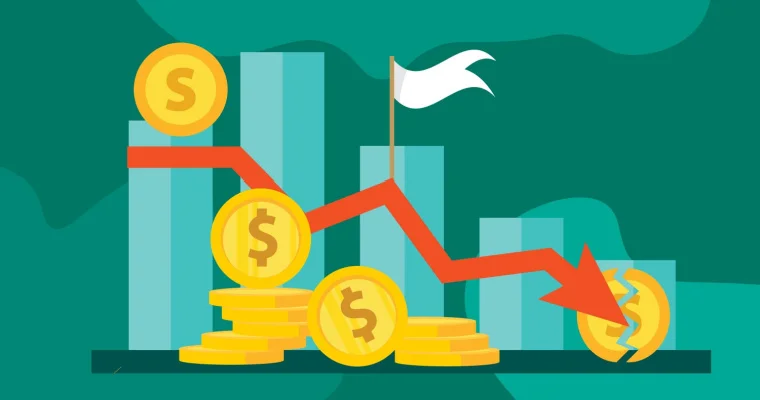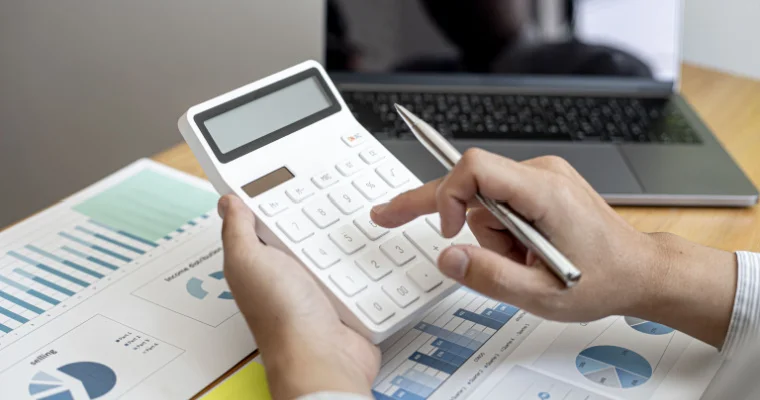What are Trade Receivables?

Trade receivables (or accounts receivable) refer to the total amount that a company has billed to a customer for the company’s products and services, but the customer hasn’t paid yet. These are recorded as assets in the balance sheet and are current assets because the maximum payment time is generally under a year.
This article helps you understand the importance of trade receivables, formula and calculation, their benefits and limitations. Read on!
Why are Trade Receivables Important?
Trade receivables represent a portion of the revenue of the business and thus offer insight into the profitability and income of a business.
While many customers pay within the stipulated time, some do delay or refuse to pay. This can impact the cash flows of the business. Thus, forgetting to record the same can lead to non-paying customers getting the product/service for free, and impact revenue and profit. Recording it as trade receivables will be a visual reminder and will help to follow up with the customer or take action.
Recording it daily also helps to come up with accurate accounting reports. This can help in the correct assessment of the financial health of the business. It will convince prospective investors and creditors that the business is reliable and thus add value to the business in the long run.
How to Calculate Trade Receivables?
Trade receivables calculation is pretty simplistic and can be done either using the trade receivables formula or the trade receivable days formula. All the values required in the formula can be found in the balance sheet. Thus, if the business has been diligently recording the data, the calculation will be easy.
Trade Receivables Formula
Trade accounts receivable is calculated using the straightforward formula below:
Trade Receivables = Debtors + Bills Receivables
To calculate trade receivables, businesses must find the requisite values from their balance sheet and add them. However, the trade receivable days formula is more effective than the trade receivables formula. It is also referred to as the debtor days ratio and helps to compute the amount of time the debtors will take to clear the bills.
Below is the formula to calculate trade receivable days:
Trade Receivable Days = Trade Debtors/Revenue *365
Benefits of Trade Receivables
Organisations use trade receivables to establish credit history for customers and offer them flexible payment plans. Below are some benefits of maintaining accounts receivable properly:
1. Helps Build Customer Loyalty
When companies offer credit buying plans to customers using credit accounts or long-term payment plans, they are likely to make more sales. Maintaining the trade receivables information in a highly organised format, allows them to easily access it when required. Also, offering such flexibility and ease builds loyalty and thus customers are retained for longer.
2. Allows Easy Tracking of Customer Credit
When companies have access to past purchases and the credit behaviour of the customers, it is easy to decide whom to offer credit plans and whom to refuse credit. Trade receivables files in digital format allow easy sorting and analysis capabilities that make it easier possible to make future decisions.
3. Streamlines Follow-ups and Profit Collection
The most important aspect of maintaining trade receivables is to identify the customers to follow up with and collect dues from them. Non-payment data allows businesses to make timely collections and come up with repayment plans. This information is also critical if the company needs to go the legal way.
4. Helps Fiscal Organisation
A thorough assessment of buying and credit trends of past customers can help to formulate new marketing strategies and sales plans. This will make way for organisational growth and new customers.
Also Read
Ways/Steps to Reduce Trade Receivables
While trade receivables are counted as assets, they are still uncollected revenue. Below are some ways to receive it:
1. Offer Varied Payment Plans
Clients have varied payment preferences and they are more likely to pay if their preference is included in your payment options. Cash, cheques, credit cards, and online modes are some options that you can include to encourage more customers to pay.
2. Incentivize Early Payment and Impose a Fee on Late Payment
Free credit may make some customers take advantage and regard it as an indefinite payment holiday. Discounts on early payments can motivate many to repay and late payment fees may deter them from further delay.
3. Complete the Invoicing Immediately After the Product or Service has been Delivered
Delaying sending invoices will only delay the payments. It is thus important to send invoices immediately post delivery.
4. Gently Remind them Before the Due Date
Not all delayed payments are on purpose. Many times, clients can be forgetful and thus it makes sense to send a gentle payment reminder before the due date.
5. Ask for a Portion of Payment Upfront
With long-term projects or expensive products and services, a partial advance payment can be a good way to stay assured of the intent of the customer and decrease the risk of non-repayment.
6. Keep the Payment Term Short
While the payment term depends on the industry of business, it is best to decide on short payment terms as that will ensure that cash flows in sooner.
7. Call the Customer
If the client doesn’t respond to emails, calling them is a good way to know why they are delaying payments. You can also remind them or restructure the payment terms.
What are Non-trade Receivables?
It is an asset category that also comprises money owed to a business that hasn’t been paid yet. However, it includes money from other sources rather than the sale of products or services. Insurance claims, dividends, and interest payments are some of the major sources of these deliverables.
Differences Between Trade and Non-trade Receivables
The primary difference between trade and non-trade receivables is the source of expected money. In the case of trade receivables, the source is revenue from the sale of products or services whereas in the case of non-trade receivables it is other sources like dividends, interest payment, and insurance. Also, a company has a legal right without any conditions on trade receivables but not on non-trade receivables.
Final Word
Trade receivables are assets for a business. It has an important role to play in determining its revenue and profitability. It is thus important to record and analyse trade receivables carefully. They are assets for the organisation and thus allows seeking loans against the bills the customers owe. It helps to raise money when the cash flow is limited and this possibility makes it imperative to ensure they are included in the balance sheet.
FAQs
Ans: Companies organise their trade receivables according to due dates. This contains a list of receivables with a description of how long the invoice has been pending along with the client’s name and amount owed. Accounting software is programmed to generate these schedules to identify defaulting customers and their dues.
Ans: Suppose a company has Rs.2,00,000 as sundry debtors on the balance sheet and Rs.2,50,000 in bills receivable. Using the trade receivables formula, the value of trade receivables will be Rs.4,50,000.
Ans: When a business doesn’t have enough cash flow, it can raise funds against unpaid invoices. This allows them to fulfil immediate cash requirements.

Customer’s Feedback
No comments found.What is Primary Deficit? – Example, Formula & Measures
What is a Primary Deficit? Primary Deficit is the difference between the current year’s fiscal... Read More »What is Financial Ratio Analysis? – Objectives, Types and Uses
Ratio analysis is a process that allows people to assess the financial health of a company. Using t... Read More »Treasury Management – Its Functions, Types and Benefits
Even the most well-funded business can run into huge losses if it does not have the resources to fu... Read More »How Anti Money Laundering Combats Financial Crime?
Anti Money Laundering (AML) is a system of rules, laws, regulations, and procedures that financial ... Read More »What is Salvage Value and Why is it Useful?
Salvage value, also called scrap value, is the value of a specific asset after its useful life. In ... Read More »Key Difference Between Factoring and Forfaiting in Trade Finance
Factoring and forfaiting have grown in prominence as major sources of export financing. For the uni... Read More »What is Factoring and its Importance in Financial Management?
Factoring is a practice in which a company buys the accounts receivable of another company at a dis... Read More »What is Budget Surplus: Its Effects, Advantages and Impact with Examples
When the revenue of a government, business, or individual exceeds its expenses in a given period, i... Read More »What is Balanced Budget – Components, Importance and Examples
In financial planning or the budgeting process, a balanced budget is one in which total anticipated... Read More »What Does Inflationary Gap Mean in Macroeconomics?
In macroeconomics, the difference between current and potential GDP is known as a gap. This gap is ... Read More »What is Accounting Conservatism in Finance and How Does it Work?
Accounting conservatism involves a conservative set of accounting guidelines wherein the worst-case... Read More »Multiple Linear Regression (MLP) – Uses, Formula and Examples
Various statistical models help in establishing a relationship between different variables. Multipl... Read More »Top 10 Chit Fund Schemes in India in 2023
Chit funds are one of the most popular return-generating saving schemes in India. It is a financial... Read More »10 Best Gold ETFs in India to Invest in April 2023
Gold ETFs or Gold Exchange Traded Funds are passively managed funds that track the price of physica... Read More »10 Best Demat Accounts in India for Beginners in 2023
Creation of Demat accounts revolutionised the way trades were conducted at the stock exchanges. It... Read More »20 Best Index Funds to Invest in India in April 2023
What is an Index Fund? An index fund is a type of mutual fund or exchange-traded fund (ETF) that... Read More »Best Arbitrage Mutual Funds to Invest in India in April 2023
Arbitrage funds are hybrid mutual fund schemes that aim to make low-risk profits by buying and sell... Read More »10 Best SIP Plans in India to Invest in April 2023
What is SIP? SIP or Systematic Investment Plan is a method of investing a fixed amount in ... Read More »10 Best Corporate Bond Funds in India to Invest in April 2023
Corporate bond funds are debt funds that invest at least 80% of the investment corpus in companies ... Read More »10 Best Bank for Savings Account in India [Highest Interest Rate 2023]
Savings account is a type of financial instrument offered by several banks. It lets you safely depo... Read More »






















